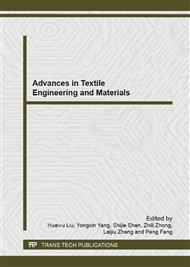p.726
p.730
p.734
p.737
p.741
p.745
p.751
p.756
p.761
Osteoblasts Express More Collagen I and Osteocalcin on Extracellular Matrix Patterns
Abstract:
In the present study, we apply microcontact printing (μCP) to create extracellular matrix (ECM) stripe patterns on polystyrene (PS) surfaces and then the effects of these patterns on osteoblast cell behaviors are investigated. The results demonstrate that osteoblast cells preferentially adhere and grow on the protein areas, leading to the deformed cell morphologies. Compared to the adherent cell on isotropic ECM coating, the deformed cells express more type I collagen and osteocalcin, indicating that the patterns can enhance protein expression of osteoblast cell by changing the cell morphologies. Therefore, it is possible to improve cell functions by carefully designing pattern shapes and sizes. We believe that the present results can contribute to development of the novel biomaterials and engineered tissues for bone repair, where the enhanced protein expression is needed.
Info:
Periodical:
Pages:
741-744
Citation:
Online since:
December 2012
Authors:
Keywords:
Price:
Сopyright:
© 2013 Trans Tech Publications Ltd. All Rights Reserved
Share:
Citation:


